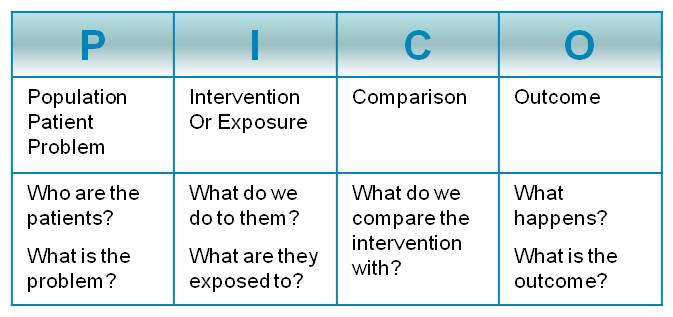
Use these bullet points as prompts when planning your search strategy
A planning template is a great tool to document your keywords, questions and what resources you are going to search such as an excel spreadsheet or more formal templates such as The Literature Search process : guidance for NSH Researchers.
PICO (Patient/ Population, Intervention/ Indicator, Comparison/ Control, Outcome) is a structure for searching and guide you in developing search terms.

Q. Does hand washing among healthcare workers reduce hospital acquired infections?
| PICO Strategy | Example |
| P (Patient or Population) | Health care workers or Hospital Staff |
| I (Intervention / Indicator) | Hand washing |
| C (Comparison) |
no hand washing ; other interventions eg face mask You could leave empty if only you wish to find studies on hand washing as the intervention only. |
| O (Outcome) | reduced infection |
Q. A 58 year old male presents with right shoulder pain developing over the past two weeks, with no history of trauma. Movements are generally painful and restricted, in particular abduction. X-ray has come back as normal. A diagnosis of rotator cuff tendinitis was made. You wonder whether it is best to treat with a corticosteroid injection or physiotherapy.
| PICO Strategy | Example |
| P (Patient Population) |
Adult with rotator cuff tendinitis OR Adult (Middle aged) with rotator cuff tendinitis
|
| I (Intervention / Indicator) | Corticosteroid injection |
| C (Comparison) | Physiotherapy |
| O (Outcome) | Reduce pain relief |
| Answerable Question | In middle aged adults with rotator cuff tendinitis is a corticosteroid injection more effective than physiotherapy to treat and provide pain relief. |